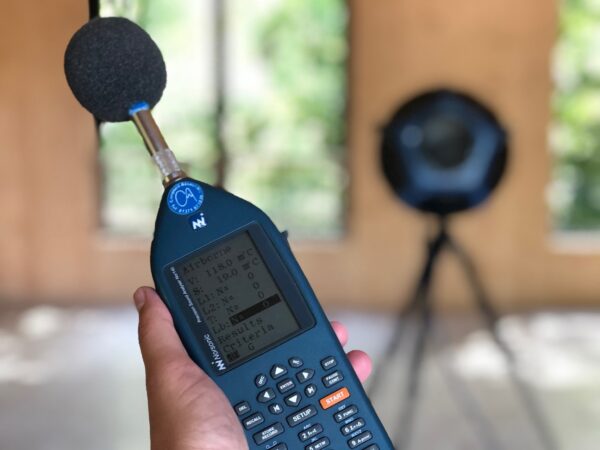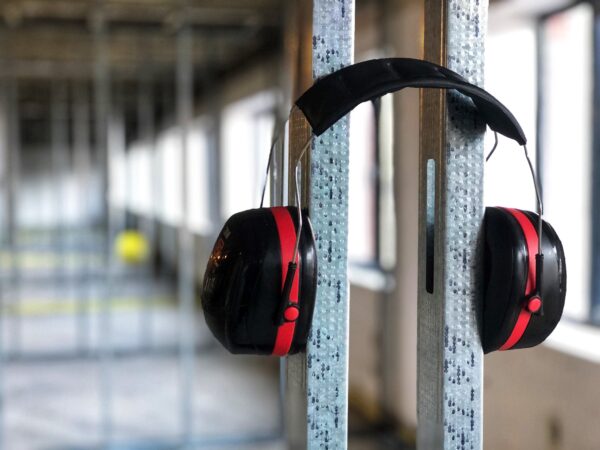Over the last decade we have provided precompletion sound testing for Part E across London and the Southeast, and using this amassed knowledge of how different construction types effects the acoustic performance of party walls and floors, we have managed to help customers such as architects, developers and homeowners to pass their sound insulation testing at the first attempt.
Poor Acoustic Design can lead to Sound Test Failure
Many people fail to achieve the minimum requirements of Building Regulations Part E, due to poor-design and construction. Good acoustic design is not difficult to achieve if the following four elements are considered during the design phase of the project. The four main elements are: Mass, Decoupling, Absorption and Damping – consider these from the beginning of your design and you will usually pass the sound test for Building Regulations Part E.
The usual culprits for excess noise are often televisions, music systems, and voices. Heightened airborne sound wave can strikes walls and floors, and the pressure variations cause the wall to vibrate resulting in noise. This noise (vibrational energy) is transferred through the wall and floor partitions, which is radiated as airborne sound into neighbouring dwellings.

The 4 elements of robust soundproof design to pass party wall sound testing
There are 4 main elements of soundproofing that need to be considered to pass sound testing through walls. It’s worth noting that all 4 elements throughout the process, all of which have a direct relation to the conduction and transmission of sound vibrations, they are: Mass, Decoupling, Absorption and Damping. If you incorporate all the four elements into your party wall design, then airborne sound transference should be kept to a minimum and you will pass your precompletion sound testing.
Here is more information on each of the four main elements:
Adding mass to Party Walls and Floors
The first (and often the most important) element of any acoustic upgrade is adding mass. If you add mass to the wall and floor construction the soundwaves will struggle to vibrate the wall/floor partition as it will have less movability, making it more tortuous for the sound vibrations to travel through the partitions. One the most common ways to add mass to a new or existing wall is by adding soundboard to each side of the wall. Soundboard is quick to install and is one of the easiest ways to decrease sound vibration, although its’ not so good at reducing deep bass sound at lower frequencies.
Add Decoupling to Party Walls and Floors
The second element of good soundproofing design is the introduction of decoupling. The term ‘decoupling’ in acoustic construction, is to separate objects or constructions such as introducing a cavity between two layers of drywall, thus separating the two main wall constructions. This provides a layer of air between the walls which provides good sound insulation and direct noise transference via noise flanking etc. Decoupling can also be achieved with resilient sound clips and/or resilient acoustic bars or channels. Extra framing via double stud or staggered stud walls is also an efficient way to decouple walls. In almost every instance sound vibrations transfer easiest via solid connections, so decoupling reduces this risk.

Resilient sound clips are small metal and rubber connections that attach to the timber of blockwork with screws. Resilient bars are then installed to the clips and plasterboard is then fastened to the channel. Sound clips provide acoustic decoupling by suspending the plasterboard on the resilient bars approx. 25-40mm from the timber or blockwork wall. This type of system is often favoured by customers as provides a minimal build up in comparison to constructing double leaf walls.
Adding absorption to Party Walls and Floors
The addition of absorption is the third element of good acoustic design is the introduction of noise absorption materials such as acoustic slabs and roll insulation.
The introduction of acoustic insulation materials such as Gyproc RW3 mineral wool (min mass 45kg/m3) can be a good place to start. The material is placed into the wall to absorb soundwaves and is very good reducing low-level noise issues. The other good thing about acoustic insulation is it’s easy to handle and install. The acoustic slabs are dense and effectively block out noise frequencies crossing the party wall and/or floors.
If you are installing a metal and/or timber stud wall/floor, you can simply insert the acoustic slab straight into the void, making sure it’s fitted neatly between the metal /timber wall studs, or timber/metal floor joists. Double check that there isn’t any sagging or holes in the material as you are installing the insulation and that should be it.
Add damping to Party Walls and Floors
The fourth element of robust soundproofing design is the introduction of noise damping within the party wall and floor. Noise damping materials can be acoustic resilient layers and rubber panels which help to reduce vibration within the partition construction. Dense rubber panel systems are high performance wall soundproofing solution aimed at providing good noise damping performance. The dense recycled rubber membrane is fairly easy to install and will provide a reliable soundproofing-barrier.
Noise damping materials such as Regupol, are usually quite easy to fit, as the acoustic rubber membrane just needs to be cut to size and stuck to the party wall and/or floor. also, the supplier usually provides an adhesive as part of rubber membrane system.
We can help with your acoustic design and sound testing
Getting the soundproofing design right from the word go, is essential for building designers and construction companies. APT Sound Testing can help in all areas of acoustic design and sound insulation testing. For more information on our UKAS accredited sound testing or acoustic design services, please contact us at info@aptsoundtesting.co.uk or call us on 01525 303905.
Alternately for more information on how to prepare for your precompletion sound testing please download our sound testing checklist, or visit our website at www.aptsoundtesting.co.uk
Please Note: although we take every care to ensure the information was correct at the time of publication. Any written guidance provided does not replace the user’s professional judgement. It is the responsibility of the duty-holder or person carrying out the work to ensure compliance with relevant building regulations or applicable technical standards.
